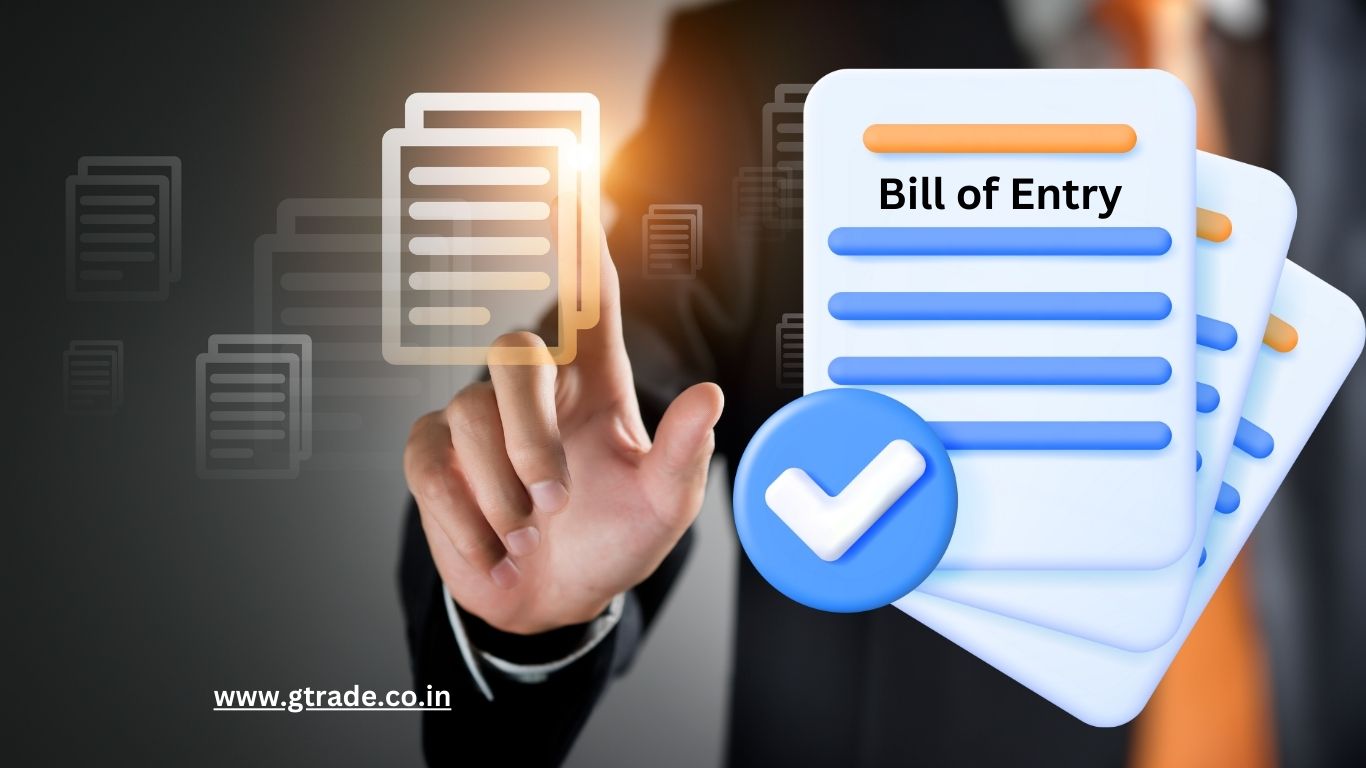Bill of Entry (BoE) and its significance in international trade.
What is a Bill of Entry?
The Bill of Entry is a key import document used in export-import transactions. It serves as a formal declaration by an importer to the customs authorities, providing essential details about the imported goods.
Purpose of the Bill of Entry(BOE):
- Legality Verification: The BoE ensures the legality of the imported goods.
- Tax Assessment: It plays a pivotal role in determining the appropriate taxes (such as customs duties, IGST, and compensation cess) that need to be paid.
- Input Tax Credit (ITC): Importers file the BoE to claim ITC for the IGST and compensation cess collected during import.
Importance of BOE in International Trade:
- Customs Clearance: The BoE is the basis on which customs duty is assessed and calculated. It ensures compliance with regulations and laws of the importing country.
- Transparency: It fosters clarity between private organizations and government authorities, allowing for smooth consignment clearance.
- Risk Mitigation: Proper documentation reduces risks and ensures transparent transactions.
Contents of the Bill of Entry:
- Importer Details: Name, address, and identification number(IEC code), GSTN No. of the importer.
- Goods Description: Detailed information about the imported goods, including their classification, value, and origin.
- Customs Value (Total Assessable value): The value of the goods for customs purposes.
- Tariff Classification: The Harmonized System (HS) code that categorizes the goods.
- Country of Origin: The country from which the goods originate.
- Invoice Details: Commercial invoice details, including quantity, value, and terms.
- Transport Details: Mode of transport, vessel/flight details, and port of entry/port of destination
- Declaration: A statement affirming the accuracy of the information provided.
- IGM No & IGM Date-In certain cases, IGM details are not applicable (such as Domestication of Containers)
- Master BL/AWB and House BL/AWB:depending upon LCL cargo and FCL cargo
- Custom Broker Number, if applicable
Different types of Bill of Entry (BoE) used in international trade.
- Bond Bill of Entry (White Color):
- When an importer prefers not to pay import duties immediately upon arrival, they store the goods in a warehouse.
- The BoE for this scenario is called the Bond Bill of Entry.
- Payment occurs once Customs receives the full payment for the import duties.
- Bill of Entry for Home Consumption (Yellow color) :
- This BoE is used when goods are intended for domestic or internal consumption in his business.
- Importers pay taxes (such as GST, IGST, and customs duty) after Customs inspection.
- Input Tax Credit (ITC) can be claimed once the BoE is issued.
- Bill of Entry for Ex-Bond Goods (Green Color):
- When goods stored in a bonded warehouse are ready for clearance, this BoE is used.
- Importers pay duties to clear the goods for domestic use.-
- ITC can be claimed after payment.
What are the documents required for a bill of entry?
Depending on the type and nature of import, some documents required to obtain BOE:
• Shipping invoice
• Packing list
• Bank draft or letter of credit
• Bill of Lading
• Insurance documents
• CHA or importer’s declaration
How to file a Bill of entry at icegate portal?
Below are the steps to file a bill of entry:
1. Figure out the mode of shipment:
It is important to confirm the mode of shipment to the CHA or importer. Identify whether the goods are shipped via air freight, sea, or courier, as different modes may involve different customs offices.
2. Choose the Correct Customs Commissionerate:
If the goods are shipped via air freight, the ACC Import Commissionerate will handle them. If they are shipped in courier mode, the New Courier Terminal ACC Export Commissionerate (NCT) will handle them.
3. Electronic Filing via ICEGATE Portal:
BOE is usually filed by the customs broker or CHA electronically through EDI (Electronic Data Exchange) service centers via the ICEGATE portal. The BOE format is available on the website that is filed by CHA.
4. Fill Necessary Information and Submit:
Fill in the required details in the BOE form and submit. Unique Bill of Entry Number would be Generated.
5. Payment of Custom Duties:
Once the Customs system processes it, CHA can access it and pay the import duties after registering the goods on the ICEGATE portal. The importer has to pay taxes like GST, IGST,compensation cess and customs duty.
The entire process of customs clearance is done electronically.These are paid to clear the goods and the importer can claim ITC compensation cess for GST and IGST.
7. Declaration and Signatures:.
The bill has two sections for signatures of both, the importer and the customs agent. Only after both these parties sign the bill, the bill becomes valid and verified.
8. Customs Examination:
After payment, the customs officer examines the goods and issues an “Out of Charge” (OOC) if the examination is successful for domestic consumption.
9. Check Status and Track:
Keep track of the status of the Bill of Entry through the customs department
FAQs on Bill of Entry
How to Make a Bill of Entry Payment?
Bill of Entry payment involves calculating and paying the amount Customs Duty, Integrated GST (IGST) and compensation Cess as applicable. For offline payment you must create a challan and submit the challan copy to Commissionerate of Customs. However, you can make bill of payment online through the given.
How to Check the Bill of Entry Status?
Check the Bill of Entry status from the ICEGATE portal. Fill in the details like Location, BOE number, data and captcha and submit to check the status of Bill of entry.
How to Find Bill of Entry on GST Portal?
- Access www.gst.gov.in.
- Navigate to Services > User Services > Search BoE.
- Enter Port Code, BoE Number, BoE Date, and Reference Date.
- Click SEARCH to access the details.
summary: the Bill of Entry is a critical tool that facilitates global trade, ensures compliance, and enables efficient movement of goods across borders.

